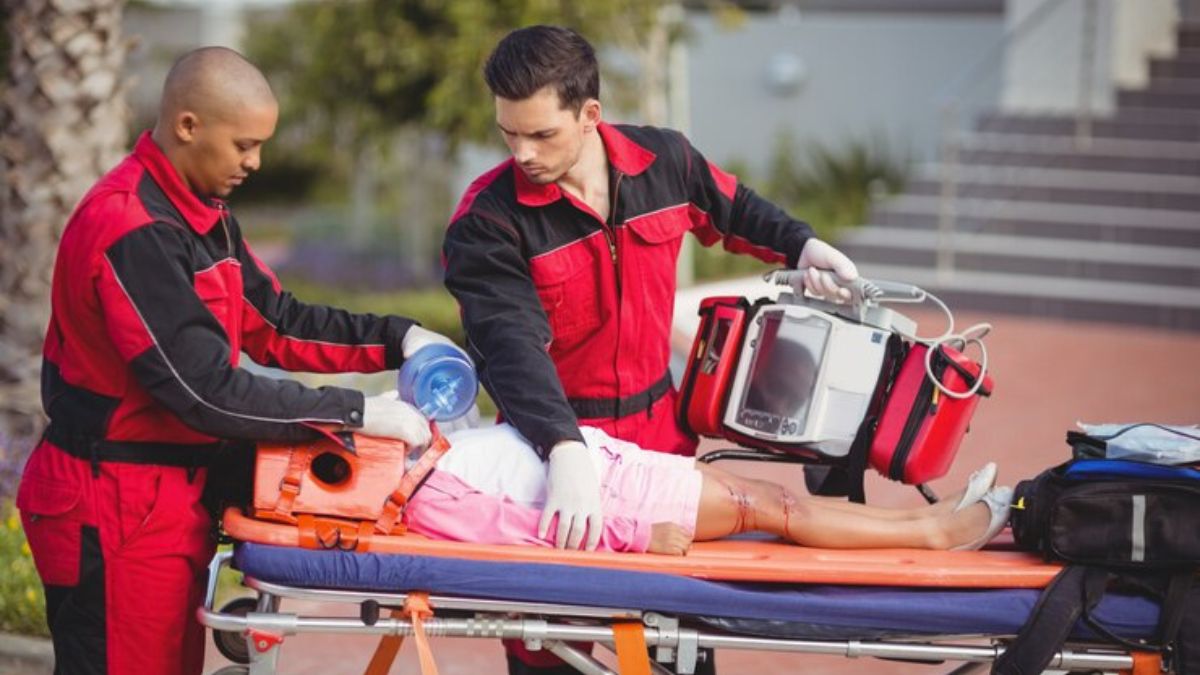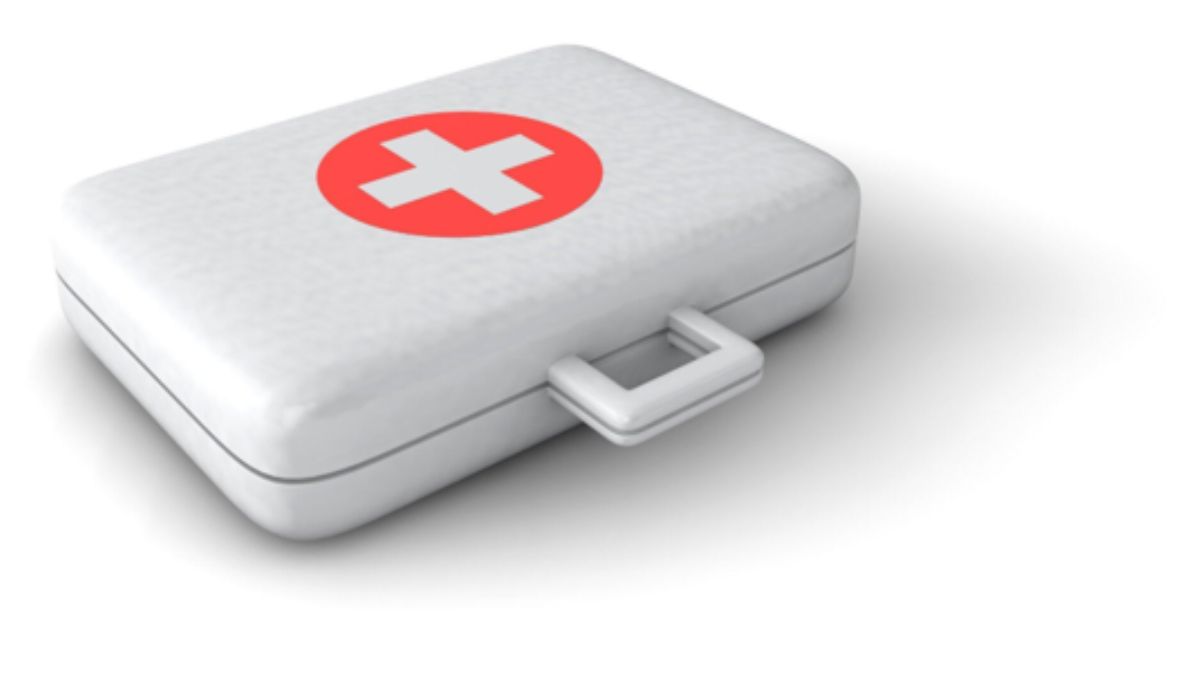HEALTH
Preparing for a Personal Injury Case: Essential Steps and Considerations

Overview of Personal Injury Cases
Personal injury cases are as diverse as they are in the city of Denver, Colorado, involving a myriad of scenarios such as vehicular accidents, workplace injuries, and even slips and falls at public venues. These incidents often compel individuals to seek justice in the form of compensation for damages incurred. A fundamental understanding of these cases—including what constitutes negligence, the type of injuries typically claimed, and the legal precedent in similar cases—sets a solid groundwork for an effective claim. For residents in the city, seeking reputed Denver Colorado injury lawyers can significantly impact the trajectory and outcome of a case. Engaging with legal professionals can help demystify the process, ensuring all necessary steps are appropriately addressed. Resources can inform potential claimants about cases typically seen in personal injury law, providing a well-rounded perspective on what one might expect during the judicial process.
Steps to Take Immediately After an Injury
The moments following an injury can be chaotic and overwhelming; however, the actions taken during this period are crucial for health and legal reasons. Securing medical help quickly is essential for staying safe and creating an official record of the injuries received. These medical records serve as pivotal evidence in court, highlighting the damages’ severity. Furthermore, injuries that may initially seem minor could have long-term implications if left unaddressed.
In addition to medical care, reporting the incident to authorities when applicable is essential in creating an official account, which can be invaluable in legal proceedings. Witness statements and contact information should be gathered if circumstances allow, as these can corroborate your version of events and strengthen your claim. Proactive steps like these significantly bolster your case’s foundation.
Gathering Evidence and Documentation
Evidence is the cornerstone of any viable personal injury claim. Thorough documentation serves as a narrative for the incident, illustrating how it occurred and how these injuries have impacted your life. Photographs of the accident scene, detailed medical reports, and eyewitness testimonies provide undeniable proof that can be compelling in negotiations or court proceedings. Organizing these elements systematically not only assists in painting a clear picture of the event but also sets up a robust defense against any counterclaims by opposing parties—the more comprehensive your documentation, the greater the chance of a favorable resolution.
Importance of Legal Representation
Navigating personal injury cases within the legal system can be complex, so having a skilled attorney is crucial. Attorneys with expertise in this field possess extensive knowledge of the tactics employed by insurance firms and are adept at obtaining the maximum possible compensation. Their role transcends simple representation; they are strategic advisors who ensure that every aspect of the claim—from evidential submissions to expert witness testimonies—is handled with precision and care. The legal professional’s ability to interpret the nuanced language of law can often make a decisive difference in the outcome.
Dealing with Insurance Companies
Insurance companies are crucial in the personal injury claims process, but their main goal is frequently to reduce the amount of money they pay out. These entities are adept at utilizing various strategies to reduce claim amounts, including offering low settlements or shifting blame. Claimants must handle communications with caution. Consulting with your lawyer before interacting with insurers can prevent careless mistakes that may jeopardize the case. Ensuring that all correspondences are documented and that negotiations are guided by professional expertise can protect your rights and facilitate a fair settlement.
Emotional and Psychological Considerations
Pursuing a personal injury claim isn’t just a physical battle; it’s emotional and psychological. The injury’s trauma, along with the legal proceedings stress, can significantly affect mental well-being. Individuals need to acknowledge this aspect and seek appropriate support when needed. Engaging with mental health professionals can aid in managing stress and anxiety, ensuring that you are mentally fortified to handle the demands of the case. Having a clear mind is essential when making crucial decisions that could impact the result of your claim.
Settlement vs. Court Trial
Many personal injury lawsuits are resolved through out-of-court settlements involving compensation, thus negating the necessity for a trial. Settlements offer a quicker resolution and reduce court proceedings’ financial and emotional costs. Nevertheless, a trial may be considered the following alternative if negotiations do not result in a reasonable offer. Navigating these choices requires careful deliberation and expert advice. Lawyers provide invaluable insights into the likelihood of success at trial versus the benefits of settling.
Maintaining Open Communication with Your Legal Team
Effective communication with your legal team is an ongoing process that ensures all parties remain aligned and focused on achieving the best possible outcome. Regular updates on case developments and transparent dialogue about expectations and concerns create a collaborative environment. Such communication demonstrates that your attorney is invested in your case and allows for mutual strategizing, enhancing the potential for successful resolution. Being well-informed fosters confidence in decision-making and contributes to a smoother legal journey.
HEALTH
What You’ll Learn in CPR & First Aid Training Courses

Have you ever wondered what you would do if someone collapsed in front of you or had a serious injury? It’s a scary thought, but being prepared makes a huge difference. CPR & First Aid training courses teach you exactly how to handle emergencies like this.
In this blog post, you’ll discover what skills you’ll learn, how these courses work, and why this training is so important. By the end, you’ll feel ready to take the next step toward saving lives.
Learn to Act Fast in Emergencies
One of the first things you’ll learn in CPR & First Aid training is how to stay calm when an emergency happens. These courses show you how to think clearly and take action when seconds matter. Whether someone has trouble breathing, is bleeding badly, or has passed out, knowing what to do right away can help save their life.
You’ll learn how to assess the situation, check for danger, and start helping before professionals arrive. These steps can make all the difference.
Discover the Power of CPR
CPR stands for Cardiopulmonary Resuscitation. It sounds complicated, but you’ll learn that it’s easy to do. CPR is a method used when a person’s heart stops beating.
You’ll find out how to push down on the chest in a steady rhythm and how to give breaths if needed. These actions help move oxygen through the body until help comes. CPR is a lifesaving skill, and anyone can do it once they are trained.
Understand How to Use an AED
An AED is a device that gives a shock to the heart to help it start beating again. During your training, you’ll learn how to use it step by step. The machine talks to you and tells you what to do, which makes it easier.
You’ll also learn where to find AEDs in public places and why quick use is so important. Using an AED right away can increase a person’s chances of survival, and you’ll be ready to do just that.
Learn to Handle Common Injuries
Every day, accidents happen all the time. Someone might cut themselves, fall, or have a burn. In CPR & First Aid training, you’ll learn how to help with these injuries.
You’ll find out how to clean and cover a wound, treat a burn, or wrap a sprain. You’ll also learn what not to do so you don’t make things worse. Knowing how to give the right care right away helps someone feel better and heal faster.
Be Ready for Choking and Allergic Reactions
Choking is another emergency that can happen suddenly. These courses show you how to spot the signs and what to do to help. You’ll learn how to perform back blows and the Heimlich method.
Allergic reactions can also be dangerous. You’ll learn how to use an epinephrine auto-injector and how to help the person stay safe until help comes. These are real situations that anyone could face, and now you’ll know what to do.
If you’re curious about even more topics covered in these lessons, get more info by visiting your local training center or health organization.
First Aid Training: The Power to Save Lives
Taking CPR & First Aid training courses gives you the skills to help others during some of life’s scariest moments. You don’t need to be a doctor or nurse. Just knowing what to do during an emergency can save lives.
These courses help prepare you for real-life emergencies in a simple, hands-on way. Did this guide help you? Browse the rest of this section for more advice on a variety of topics.
HEALTH
The Role of Community in Veteran Health and Wellness

Did you know that a strong community connection can play a transformative role in the health and wellness of our veterans? In recent years, studies have shown that social integration significantly boosts mental health and overall well-being, especially for those who have served in the military.
Veterans often face unique challenges, and having a supportive community can be a crucial factor in their recovery and sustained health. This article explores the vital importance of a community in veteran health and how senior living options can enhance their overall quality of life. Keep on reading.
The Importance of Community in Veteran Well-Being
For veterans transitioning back into civilian life, the shift can often feel overwhelming. Many struggle with feelings of isolation and alienation from those who haven’t shared similar experiences. This is where a sense of community becomes essential.
A supportive network helps veterans feel connected and valued. In senior living environments, fostering a community spirit can lead to:
A Sense of Belonging
Veterans often feel better when they know others share their past. Living with peers who understand can make them feel safe. This helps build real friendships and trust.
Improved Mental Health
Being around others can ease sad or anxious thoughts. Talking, laughing, and sharing stories helps the mind. These small moments lift spirits each day.
Physical Health Benefits
Group activities like walks or games keep the body moving. Staying active with others can be more fun. It helps veterans stay strong and feel better.
Easy Access to Resources
A strong group can guide members to helpful tools. It’s easier to ask for help when others understand. Veterans find what they need without feeling lost.
How Senior Living Enhances Social Connections
Many places where seniors live are made to feel like a strong community. Some have special programs just for veterans. These programs help them feel supported and connected with others.
There are group trips, fitness classes, and other fun things planned for veterans. These keep them busy, happy, and moving. It also helps them meet people who understand them.
Some places also give extra care for mental health. Veterans can talk to people who know about things like PTSD. Being around others with similar stories can help them feel less alone.
Building Supportive Care Frameworks
Supportive care is more than just meeting physical needs; it’s about holistic wellness that encompasses emotional, mental, and social aspects. Within a community-focused approach, veterans can tap into:
- Peer support groups
- Integrative wellness programs
- Access to healthcare
The Unique Proposition of Community-Focused Senior Living
Choosing a senior living arrangement that emphasizes community focus provides veterans with the unique opportunity to enhance their quality of life. Not only can they maintain independence, but they can also engage in a variety of activities designed to foster relationships and an active lifestyle.
Facilities that prioritize a community focus in veteran health often include programming tailored specifically for them. They offer more than just a place to live. Veteran programs for seniors create a supportive atmosphere promoting veteran wellness through engagement, shared experiences, and friendship.
Invest in Your Health and Well-Being Today!
If you or a loved one is a veteran looking for a welcoming community, consider exploring options that offer comprehensive support and a vibrant community in veteran life. With a focus on wellness and connection, you can conquer the challenges of daily living and thrive among peers who understand and appreciate your journey. Your health and well-being deserve a community that cares.
For more related topics, check out the rest of our blog!
HEALTH
How Cannabis Extracts are Redefining Medical Applications

How can one plant help with so many health needs?
Cannabis extracts are now used in new ways to treat different medical problems. These extracts come in forms like oils, drops, and pills. Many people use them to feel better without strong drugs.
Doctors and patients are starting to see the value of these products. They are easy to use and made with care. If you’re looking for new ways to feel better, cannabis extracts might be worth a try. Want to learn more about how they work and how they can help? Keep reading!
Managing Pain
Many people deal with pain each day, and finding safe ways to manage it matters. Cannabis extracts are giving new hope by offering support for pain that doesn’t always respond to common treatments.
These extracts may help with joint pain, nerve pain, and pain from injuries. They work by interacting with the body’s systems in a natural way. Unlike some strong drugs, they are less likely to cause harm with long use.
Doctors are now looking at these extracts as a helpful tool for people with ongoing pain. As more studies are done, more is learned about their benefits. To stay informed about growing options for care, reading articles like these can help guide smart choices.
Helping with Sleep
Trouble falling asleep or staying asleep can affect daily life. Cannabis extracts are now being used to support better sleep by helping the body relax at night. Some people say they fall asleep faster and wake up less often.
These extracts may work by calming certain parts of the brain that stay active during rest. Many users prefer them over common sleep aids because they feel more natural. They are often taken as drops or capsules before bedtime.
People who have tried other sleep methods without success are now turning to this option. As more is learned, cannabis extracts may become a trusted part of nightly routines. For those hoping to wake up feeling more rested, they could be a step toward better sleep.
Easing Anxiety and Stress
Busy days and constant pressure can lead to feeling overwhelmed. Cannabis extracts are now being used to help ease anxiety and lower stress levels. Some people say they feel calmer and more balanced after using them.
These extracts may work by helping the brain respond better to stress signals. They are often taken in small amounts during the day and may support a more peaceful state of mind in daily life.
Supporting Appetite and Nausea Relief
Feeling sick or not wanting to eat can make recovery harder. Cannabis extracts are now being used to help reduce nausea and improve appetite. This can be helpful for people going through treatments that make eating difficult.
The extracts may work by calming the stomach and making food seem more appealing. They are often taken in small doses and come in easy-to-use forms. For some, they offer simple support during times of low appetite or queasiness.
Exploring New Paths with Cannabis Extracts
Cannabis extracts are opening new doors in medical care, offering support in ways that were once hard to find. From easing daily struggles to helping with serious health challenges, these extracts are changing how treatment can look and feel.
Their growing use shows how natural options are becoming part of trusted care plans. As research continues, more people may find comfort and balance through these products. Exploring new paths with cannabis extracts in modern care shows how far healing can go.
Did you find this article helpful? Visit our website for more awesome content like this.
-

 HEALTH1 year ago
HEALTH1 year agoIntegrating Semaglutide into Your Weight Loss Plan: A Practical Guide
-

 HOME IMPROVEMENT1 year ago
HOME IMPROVEMENT1 year agoHow to Choose the Perfect Neutral Area Rug for Every Room
-

 LAW1 year ago
LAW1 year agoPost-Divorce Considerations in California: Modifications and Long-Term Planning
-

 LAW1 year ago
LAW1 year agoTeenage Drivers and Car Accidents in California: Risks and Parental Liability
-

 CONSTRUCTION1 year ago
CONSTRUCTION1 year agoConstruction Site Safety Regulations in New York and Your Rights as a Worker
-

 FINANCE1 year ago
FINANCE1 year agoDigital Asset Management in Florida Estate Planning
-

 LAW1 year ago
LAW1 year agoKentucky’s School Football: Concussions, Injuries, and Legal Options
-

 LAW1 year ago
LAW1 year agoGang Activity and Criminal Charges in CA: Protecting Your Rights
